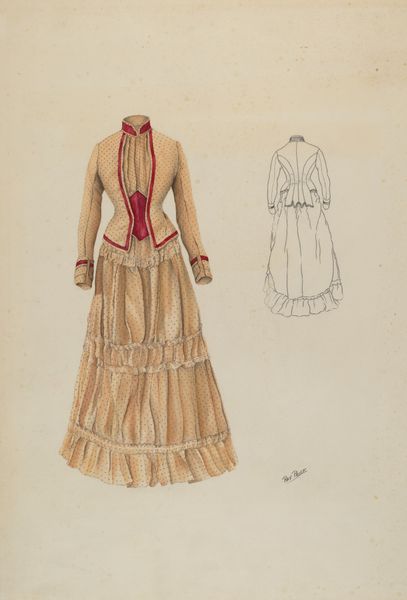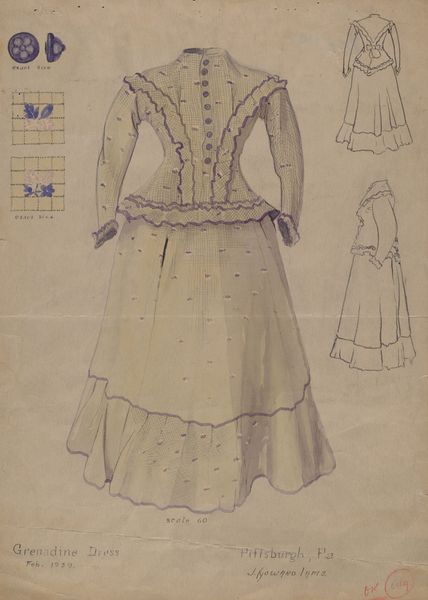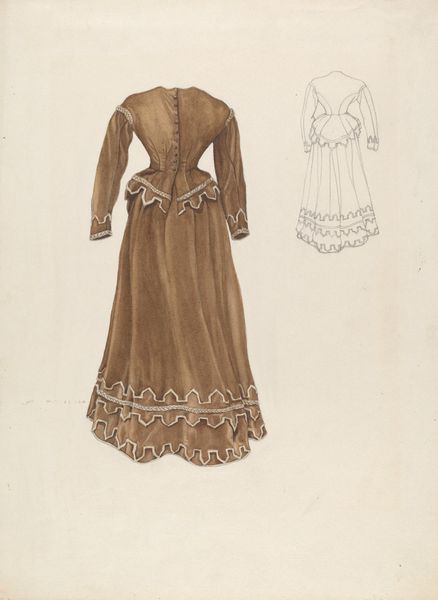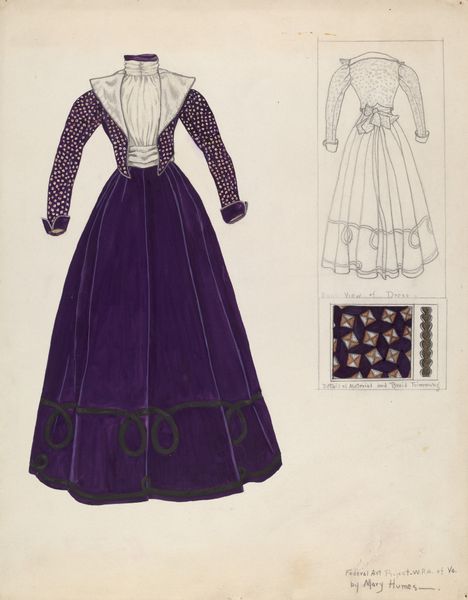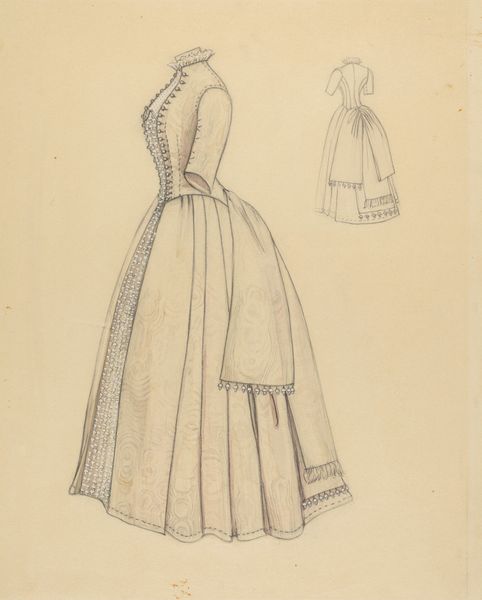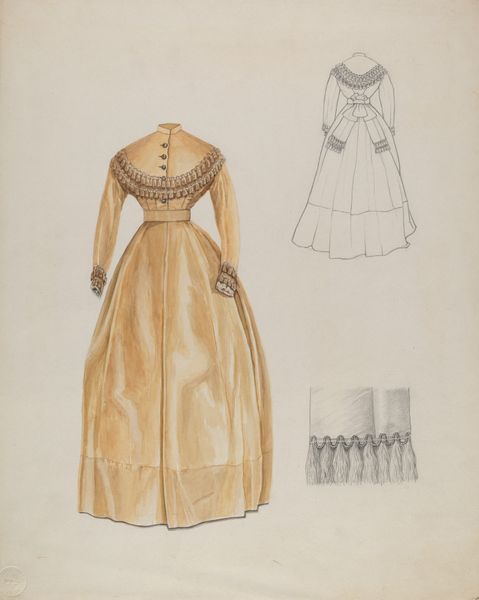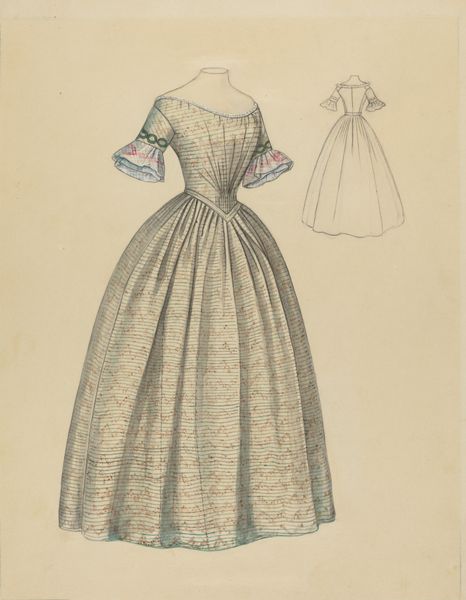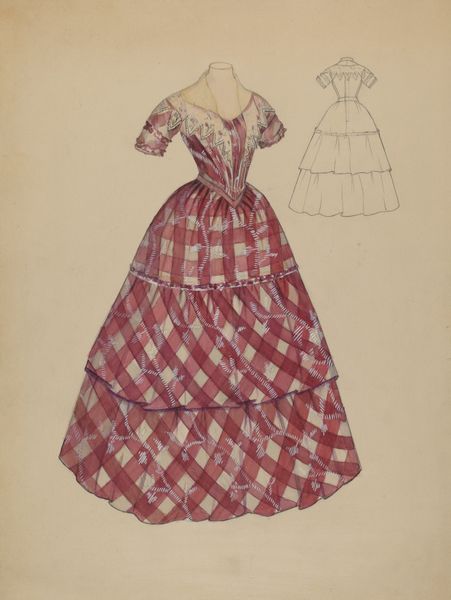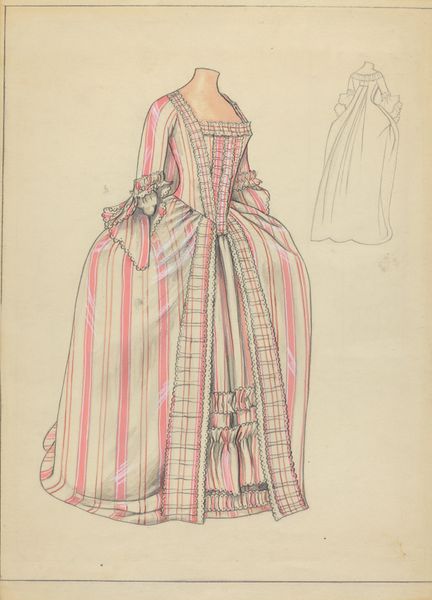
Dimensions: overall: 37.5 x 26.9 cm (14 3/4 x 10 9/16 in.)
Copyright: National Gallery of Art: CC0 1.0
Curator: This watercolor drawing by Lucien Verbeke, simply titled "Dress," was created around 1937. What strikes you first about this image? Editor: It feels strangely melancholy, almost like a ghostly image of a bygone era. The faded rose color palette and the meticulous detail suggest a longing for something unattainable. Curator: Indeed. Verbeke's rendering is intriguing from a material perspective. The layering of watercolor gives depth to what might otherwise be a flat image. It hints at the textures—the velvet, lace—and the sheer labor involved in crafting such a garment. One has to wonder about the material conditions that make possible something so delicate and ornate. Editor: And the social rituals embedded within the garment itself! It's impossible to separate it from the rigid gender roles of the late 19th century, the corsetry, the restricted movement...the garment performs power. This kind of fashion largely caters to an elite, usually white, segment of society and is part of its own performative ecosystem. Curator: Precisely. It embodies both constraint and artistry. Consider how this drawing becomes a blueprint, a plan dependent upon multiple specialized laborers: weavers for the fabric, seamstresses for the assembly, distributors, consumers. It's all intertwined in the means of production. Editor: The garment also operates as a tool that dictates identity. The person who inhabits that dress enters a theater, their agency and their possibilities are modulated. There’s an unspoken transaction where elegance becomes the price of freedom. Curator: Looking closely at the watercolor technique, it’s like Verbeke is trying to capture not just the appearance of the dress, but also its essence—the very act of creating this idealized version through artistic and industrial labor. Editor: We have been invited to scrutinize these garments through a specific lens, prompting us to unpack our contemporary associations, perhaps even inspiring some hope to interrogate modern garment production and its impact on contemporary societal conventions. Curator: Thank you. Considering the intricate craftsmanship portrayed, perhaps that’s a worthy aim. Editor: Agreed.
Comments
No comments
Be the first to comment and join the conversation on the ultimate creative platform.

